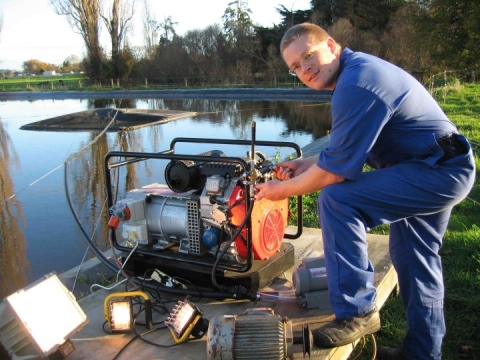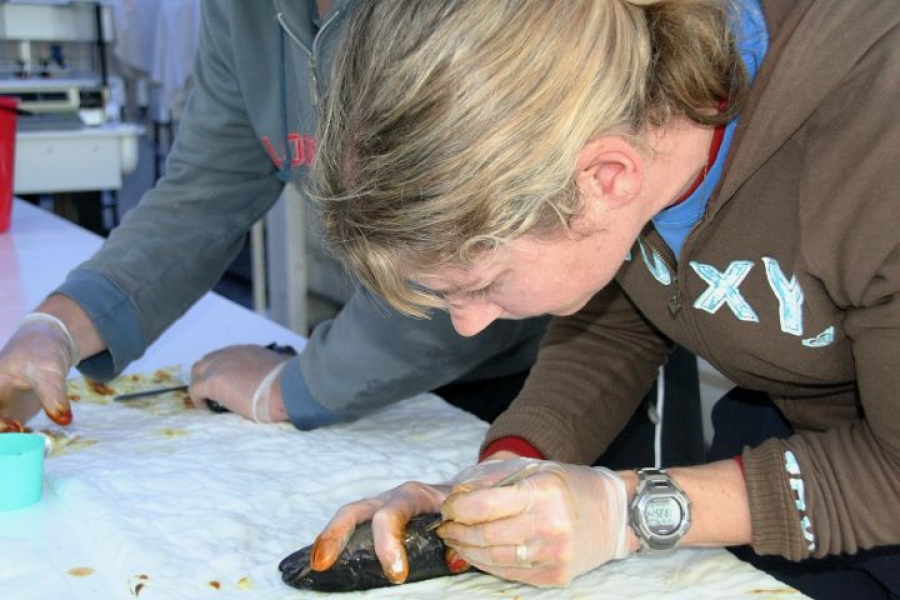As part of work to restore galaxiids to urban streams, NIWA scientists have been monitoring the movement of giant and banded kōkopu.
In December 2009, NIWA scientists tagged 30 hatchery-reared adult giant kōkopu with PIT (Passive Integrated Transponder) tags, and released them into a 200-metre study reach of the Nukumea Stream, Auckland. The release is part of a major project looking at ways of restoring large galaxiids, specifically giant kōkupu and banded kōkopu, to urban streams.
We have monitored the movement of the tagged giant kōkopu with fixed and portable antennae. One month after the release, over half the giant kōkopu were still within the study reach. By March, however, most of the giant kōkopu had emigrated out of the study reach.
"Stream flows have been extremely low through the late summer, and we think that the giant kōkopu may have moved to find more suitable habitat outside the study reach," says Dr Cindy Baker. "Meanwhile, resident banded kōkopu which we also tagged remained within the study reach over the summer. So this suggests that the re-introduction of giant kōkopu into the Nukumea Stream may not displace the existing banded kōkopu population."

NIWA's Paul Franklin checks data collected by the PIT system. (Photo: NIWA)
Further monitoring of the stream is planned, expanding the searches with the portable antennae to outside the study reach to try and find the tagged giant kōkopu. This information will greatly improve our understanding of key factors in restoring galaxiids to streams.
Contact: Dr Cindy Baker

